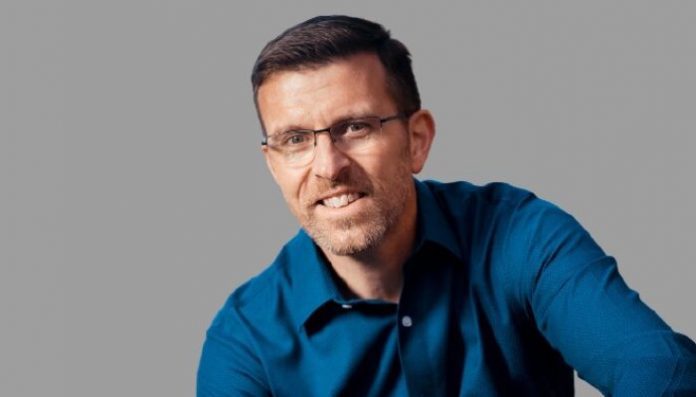
In Conversation with Jason Lauritsen, Keynote Speaker, Author, and Advisor on Employee Engagement
Jason Lauritsen is transforming management as a keynote speaker, trainer, and author. He liberates managers from outdated and inhumane practices so they can cultivate human potential at work and improve people’s lives. Jason’s advice and teachings are informed by decades of experience as an entrepreneur, corporate executive, and employee engagement researcher.
Jason is the author of two books, Unlocking High Performance: How to use performance management to engage and empower employees to reach their full potential and Social Gravity: Harnessing the Natural Laws of Relationships.
Q- You have a popular quote “Work is a relationship, not a contract”, please elaborate for us?
Sure. If you look at any large set of employee engagement data, you’ll notice that there are some key drivers of engagement that are always present. These include feeling valued, knowing someone at work cares about you, feeling appreciated, and having trust. What these drivers reveal is that employees experience work like a relationship. And they are most engaged at work (meaning they willingly perform up to their potential) when work feels like a healthy relationship.
Unfortunately, most organizations today treat work like a contract with the employee to be enforced. That’s the primary reason we have HR practices like job descriptions, performance appraisals, and policy manuals–to ensure the organization gets what they are paying for based on this “contract.” And while this compliance-based approach may appear to be working in some regards, it’s a terrible way to approach relationship building.
If you want to create an employee experience that retains people and invites them to be their best at work, you have to design work to feel like a healthy relationship. This is the core of what I teach managers and leaders to do through my work.
Q- Jason, how to create a more engaging work experience for employees in Fluid Workplace Models?
While the changing nature of how we work is certainly calling for some different approaches to HR and management, the fundamentals of engaging employees remains the same. If we understand work as a relationship, then at the very heart of any relationship is great communication. To help employees feel connected and supported, you need processes and practices in place to foster effective two-way communication with employees.
The most powerful tool to achieve this type of communication is regular, structured one-on-one meetings between the employee and their manager. Employee surveys are also incredibly useful when well-designed and followed by an acknowledgment of what was heard through the survey and a course of action informed by the employee’s feedback.
Q- How to unlock people’s performance in the changing paradigm of workplace?
In my book, Unlocking High Performance, I explain that we need to make a mindset shift when it comes to how we approach employee performance. Instead of viewing performance as something that needs to be “managed” or coerced by employees, we need to cultivate employee performance. Cultivation is a concept borrowed from farming.
Farmers are also in the growth and performance business, but they approach it differently than we do at work. A farmer trusts that each plant is programed from the day it is planted to grow and perform to its full potential. It doesn’t have to be motivated to perform. The job of farming is to ensure that each plant has what it needs to grow (i.e. water, nutrients, etc.) and that any obstacles that might prevent growth (i.e. weeds, insects, etc.) are minimized as best as possible. This work is called cultivation.
To unlock and unleash human performance at work, we can be inspired by farmers and adopt a cultivation mindset. We can use this mindset to shape how we manage performance around these concepts:
- Humans are naturally programmed for growth and performance. It is our default setting.
- People will always choose success over failure when given the opportunity.
- When people aren’t performing at work, it’s because they are either facing an obstacle or have an unmet need.
- The job of management and HR is to identify and meet employee needs and address obstacles to performance.
The bottom line is this. Regardless of where or how or when your employees are being asked to work, if you want them to perform, you need to understand what they are struggling with and what they need to succeed. This is why communication through one-on-ones and surveys are so critical. Once you understand the needs and obstacles, you know how to help them perform.
Q- How to leverage Technology in developing and sustaining Employee Engagement in current times?
Technology should always be thought of as a tool. So, the questions to be asking about technology are these:
- What technology can help us strengthen the employee relationship by enhancing communication and making employees feel valued?
- How can use technology to identify employee needs and obstacles?
- How can we use technology to meet employee needs and address or remove obstacles to performance?
Be crystal clear in your plan for how your technology tools will be used to foster the employee relationship and how you will measure success.
Q- Any concluding comments?
People are far more resilient than we give them credit for, but they are struggling. A mental health crisis is building and now is the time for action. What your people need from you right now is care, support, and resources. If you don’t show up for them in this way, your best people will leave you to find someone else who will.
Thank You, Jason!








